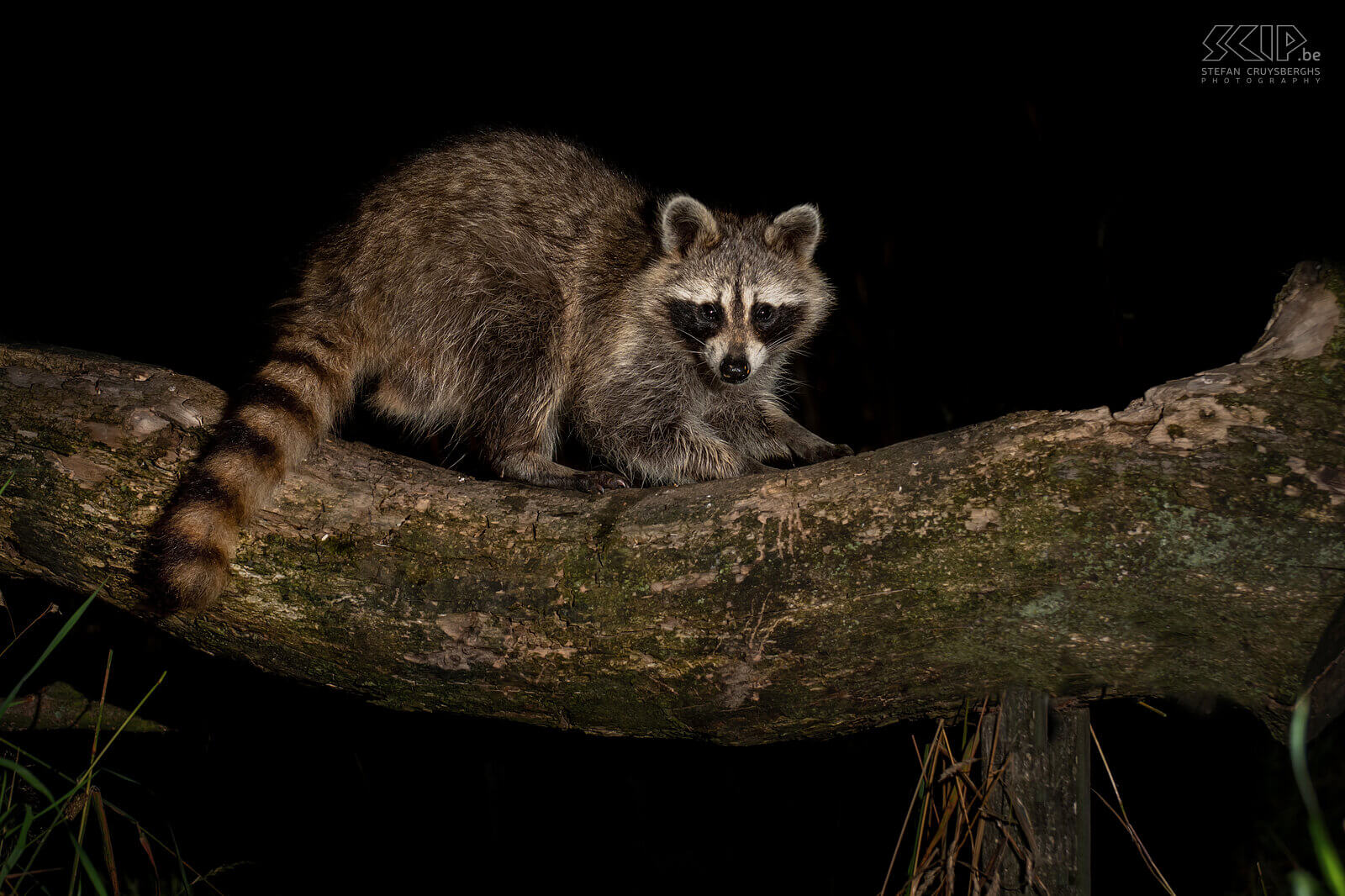During one of the nights that I stayed in the observation cabin in the Ardennes, I was able to photograph the raccoon. The little bears with Zorro mask and ringed tail look cute and cuddly, but they are not. The raccoon is an invasive exotic species that has been introduced in Germany since WWII and has since spread to neighboring countries. There are probably more than a thousand in the Belgian Ardennes. And now and then one even pops up in Flanders. Raccoons are mainly active at night and are therefore rarely seen. They have no natural predators and do cause some damage in our forests. They are omnivores and so they eat everything; fruits, nuts, corn, worms, birds, lizards, snakes, fish and even squirrels.
, Stefan Cruysberghs, Nikon D500 + 70.0-300.0 mm f/4.5-5.6, Request high resolution photo Wasbeer, Racoon, Procyon lotor, Ardennes, Ardennen, Plateaux des Tailles, Belgium, België, Wallonia, Wallonië, Procyon, Wasbeer







